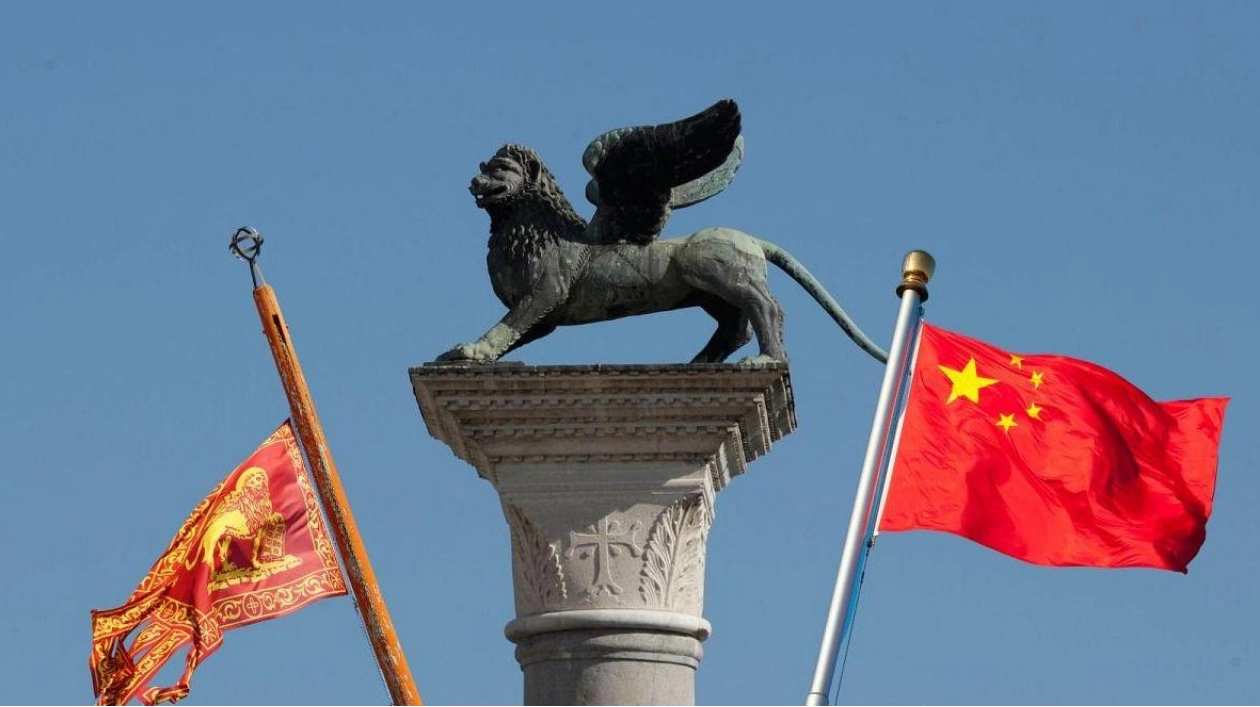The Lion of Venice, an ancient bronze statue of a winged lion, stands proudly on a massive plinth of Egyptian granite in Piazza San Marco, captivating countless tourists. But did you know that this lion has wings? In Venice, it's not just any lion; it's a lion-griffin hybrid that symbolizes the city and its patron saint, St. Mark. This iconic figure is often depicted with wings, a halo, and a book beneath its paw—elements deeply connected to St. Mark the Evangelist. You can find it on the Venetian flag, as the emblem of the Venice Biennale, and even as the form of the Golden Lion prize, introduced in 1949 at the Venice International Film Festival.
Dating back to between 1172 and 1177, the Lion of Venice has recently made headlines due to a new chemical study conducted by researchers at the University of Padua. This study, conducted around the 700th anniversary of Venetian explorer Marco Polo’s death, revealed that the statue originates from copper ore deposits in China. Specifically, lead isotopes indicate that major parts of the statue were crafted from bronze deposits along the lower Tangzi River. These findings were presented at an International Conference in Venice titled “Marco Polo, the Book and Asia: Research Perspectives Twenty Years Later.” Previously, it was believed that the statue came from Eastern Anatolia (modern-day Turkey) around the 4th to 3rd centuries B.C.E.
Why does this matter? The Lion of Venice is a symbol of power and courage, and as the emblem of the prestigious Venetian Republic, its origin is significant. It was already known that the statue predated Marco Polo and was transported to Venice in pieces, possibly by Polo’s father and uncle, Nicolò and Maffeo, who were at the court of the Great Khan in Beijing between 1264 and 1266. The new findings underscore the global nature of trade during the Middle Ages, the interconnectedness of the medieval world, and the far-reaching influence of the arts from China’s Tang Dynasty (618 – 907 CE).
So, is it really a lion? The new findings suggest a different interpretation. It might not be a chimera but a zhènmùshòu (“tomb guardian”), a popular Chinese fantasy animal during the Tang Dynasty that protected tombs from demons. According to the study, the creature's moustache, teeth, ears, and horns were likely trimmed or sanded to resemble a lion, a more recognizable symbol in Western faith.
The question remains: was the statue bought or stolen? Historically, Venetians were known for their extensive pillaging of art from the Byzantine Empire during the Fourth Crusade. For example, the famous bronze Horses of Saint Mark statues were stolen and installed on the facade of St. Mark’s Basilica. In the 13th century, bronze was abundant due to crusading activities. While the mystery persists, the new information not only reflects Venice’s rich history but also a global network of trade and plunder—along with the unscrupulous retooling of culture.
Did you know? The statue weighs approximately 3,000 kilograms, and the book under its front paws is a later addition. The inscription on the book reads: “Pax tibi Marce, evangelista meus” (“Peace to you Mark, my evangelist”). Legend has it that while St. Mark was visiting the Venetian lagoon in the 1st century AD, an angel appeared to him during a storm, reassuring the saint with those very words.






